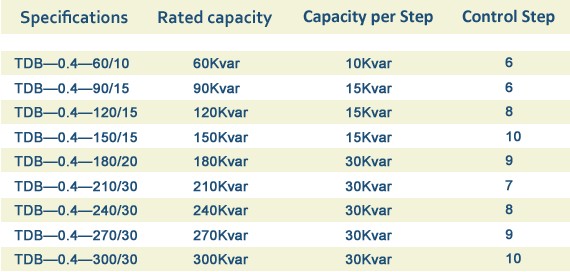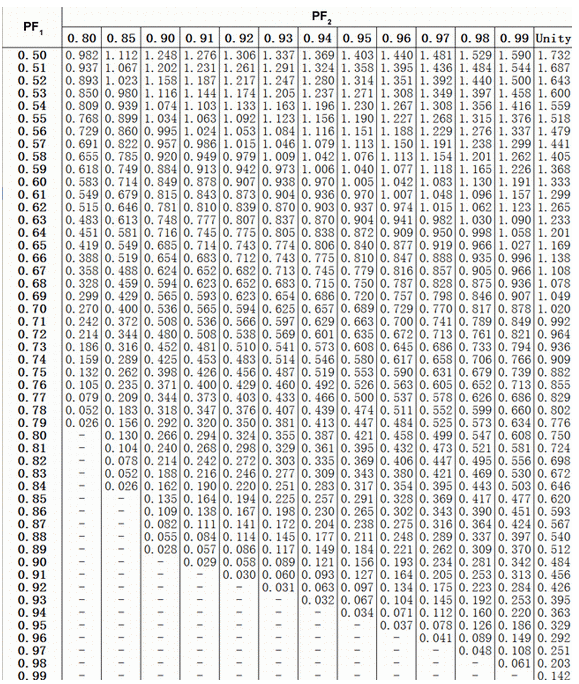POWER FACTOR CORRECTION
Power factor correction is the ratio of the active (in other words, usable) power in kilowatts (kW) to the total (active and reactive) power in kilovolt amperes (kVA, calculated as: kW / kVA = PF). A PF of less than 1 (or 100%) indicates the high level of reactive (magnetising) power load which causes some additional energy loss and, as a consequence, customers are charged for the extra power.
A poor power factor level requires more current to perform the same amount of work!
By optimising and improving the PF, the load on the electricity distribution system is reduced. The savings through installing power factor correction equipment depends upon the initial PF, the level you correct to and electrical equipment loading. The PFC equipment works as a silent reactive power “generator” so that the total amount of electrical demand decreases.
Consider a canal boat being pulled by a horse. If the horse could walk on water then the angle (Phi) Ø would be zero and COSINE Ø=1. Meaning all the horse power is being used to pull the load. However the relative position of the horse influences the power. As the horse gets closer to the barge, angle Ø1 increases and power is wasted, but, as the horse is positioned further away, then angle Ø2 gets closer to zero and less power is wasted

How does it help?
Blue Jay’s PFC systems can increase the efficiency of power supply, delivering immediate cost savings on electricity.
Other advantages of PFC include:
-. Reducing harmful system harmonics and therefore fewer occurrences of power quality-related equipment problems
-. Ability to free up spare capacity on the transformer and main switchboard, thereby providing additional capacity for future load growth without the need to upgrade infrastructure
-. More stable and improved voltage regulation ensuring motors and plant operate at maximum efficiency
-. Reducing strain on the network provider’s supply system thus helping avoid possible blackouts in the area.

Blue Jay Low Voltage PFC
Better electrical utilisation and efficiency can be achieved with the use of Power Factor Improvement Systems resulting in:
1. Reduction of electricity used
2. Reduction of electrical load
3. Reduced losses due to improved machinery performance
Automatic Power Factor Improvement Systems can be used to achieve the above goals and are detailed at the following issues:
1. modules and power factor relays
2. capacitors and capacitor banks
3. standard equipment specifications
4. harmonic blocking reactor specifications
5. accept ODM ordering
Blue Jay Electronic use high quality power capacitor
capacitor
Specifications:
Rated voltage 440Vac ~ 610Vac (1-Ph or 3-Ph).
Overload current (2x) rated current permanently, (300x) rated current peak for short period.
Rated Frequency 50Hz / 60Hz
Rated Reactive Power 2.6kVAr ~ 26.9kVAr at 415V 50Hz
Tolerance ± 5%
Temperature Class -40 ~ +60 Degree Celsius
Typical Loss 0.2Watt/kVAr at Coils
Standards Conformance VDE0560, EN60831, IEC60831
Automatic Power Factor Controller
power factory controller
Specifications:
Control voltage 110Vac ~ 610Vac (1-Ph or 3-Ph).
Provide basic power data display
6~16 channel switch control
Rated Frequency 50Hz / 60Hz
Control Power Factor from -0.6 to 0.99
Unbalance load compensition
THD protection
Option remote control/reading data

Notes:
1. The TDB series Automatic PFC is for low voltage design, standard for Three phase 400VAC power line; if need 600VAC type plase contact Blue Jay’s Sales team.
2. If need Rated capacity more than 300Kvar, please contact Blue Jay’s Sales team for detail design.
How can I find the rated capacity in my application
Please follow the Calculate Formula:
Capacity=(Kw) * Kc
Kw = your electrical system rated active power
Kc = Compensation coefficient

PF2 = Expect power factor after compensation
PF1 = Current power fator in your elelctrical line
For expample: your application rated active power is 500Kw
PF2 = 0.95 PF1 = 0.7
From the table can find the Kc = 0.689
So the rated capacity is 500 * 0.689 =344Kvar
Notes: From this quick caculate formula just for referance, the exact PFC capacity will affect by harmonics, grid voltage load change, If you do not confrim, please contact Blue Jay’s technical team
Quick Links
Contact Us






